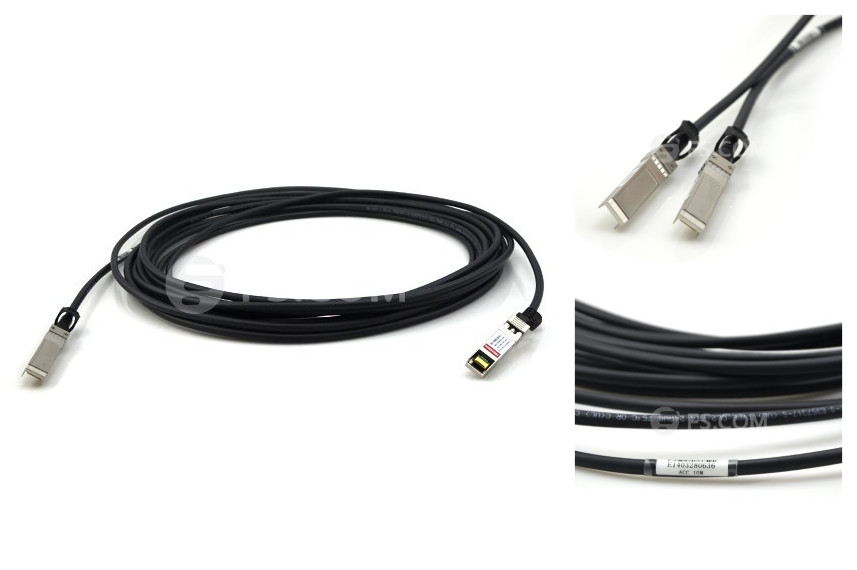July 22, 2016
10 Gigabit Ethernet (10GbE) now is a commonplace for current network backbones and data centers to support high-bandwidth applications. And with the continuous advancement and improvement in 10GbE technology, it has extended its applications to midmarket networks for the purpose of ensuring faster data transmission and better network performance. How to achieve an efficient and smooth 10GbE network? In this post, several connectivity options for 10GbE infrastructure will be introduced.
Nowadays, 10GbE has been an desirable and affordable choice with high performance. And there exists a distinct need for 10GbE networks. The ever-increasing applications require considerable bandwidth to support the transfer and streaming of large data, video and audio files. Besides, rapid and dramatical development of network technologies drive companies to upgrade their current infrastructure and improve its ability to keep pace with the developent. What's more, re-cabling a network can be money-consuming, thus organizations should take precautions to ensure that their cabling systems can perform well in the long run.
Why choose to deploy 10 Gigabit Ethernet? It has several advantages. First, 10 GbE provides the very best assurance for being able to support forthcoming technologies and delivers utmost investment protection. Second, 10 GbE is an ideal technology to move large amounts of data quickly. The bandwidth it provides in conjunction with server consolidation is highly advantageous for web caching, real-time application response, and parallel processing and storage. Moreover, 10GbE campus backbone establishment is a one-time expense that can provide significant cost savings when compared to monthly communications link bills. To implement 10GbE, here are several connectivity options for you.
Fiber cabling is typically used for remote campus connectivity, crowded wiring closets, long-distance communications and environments that need protection from interference, such as manufacturing areas. Fiber cabling is very reliable and less susceptible to attenuation, which makes it an optimum for sending data beyond 100 meters. However, fiber cabling is more costly than copper.
Copper cabling is popular for transmitting data between devices due to its low cost, easy installation and flexibility. Copper is best when utilized in short lengths, typically 100 meters or less. When employed over long distances, electromagnetic signal characteristics hinder performance. In addition, bundling copper cabling can cause interference, making it difficult to employ as a comprehensive backbone. Therefore, copper cabling has become the principal data carrying technique for communication among PCs and LANs, but long-distance transmission. 10G SFP+ direct attach copper cable, such as HP J9281B compatible SFP+ direct attach copper cable, as shown below, is a popular copper solution for 10 Gigabit Ethernet, which has become the main choice for servers and storage devices in a rack for its low latency, small connector and reasonable cost.

Other than the cabling choices, service providers should also pay much attention to the devices that connect their cabling to their networks. There are various transceiver modules available to match each gigabit standard. 10 GbE has four defined transceiver types.
SFP+: SFP+ transceiver, an extension of the SFP optical transceiver, is designed to increase the capacity of the existing SFP module. It has the same mechanical characteristics as the the SFP transceiver, just capable of supporting the higher speed. For many customers, the possibility of achieving 10G speeds and a mechanical form factor that allows 1G or 10G to reside in the same footprint, might prove attractive. It has now become the predominant 10G Ethernet connector type, and branded by many famous companies, like HP, Cisco, Finisar, etc.
XFP: XFP transceiver is the closest in size to the SFP pluggable transceiver now used for gigabit technology. It allows switch vendors to increase port density in a smaller area for cost savings. XFP transceiver cannot support the current 802.3ak copper or the 10GBASE-LX4 standards.
X2: X2 transceiver is about 2/3 the size of XENPAK module. With the same "hot pluggable" specifications and supporting all the 10GbE standards (including copper), the X2 form factor allows for more port density on switches. X2 provides customers with a strong sense of assurance that this technology is the best choice for today and will have strong vendor support.
XENPAK: XENPAK transceiver is the first 10GbE pluggable transceiver on the market to support the 802.3ae standard transmission optics. They are large, bulky and used mainly in LAN switches. These transceivers are "hot pluggable" and support the new 802.3ak copper standard with vendors now producing transceivers to connect CX4 cables.
10 Gigabit Ethernet is commonly used to upgrade networks and support bandwidth-intensive applications. Companies and organizations should have a solid and comprehensive understanding of 10GbE technology before deploying it, which would help to develop a sound migration and cabling method and surely get benefits from 10 Gigabit Ethernet in the long run.
Posted by: jowang at
07:36 AM
| No Comments
| Add Comment
Post contains 802 words, total size 6 kb.
35 queries taking 0.0176 seconds, 70 records returned.
Powered by Minx 1.1.6c-pink.









